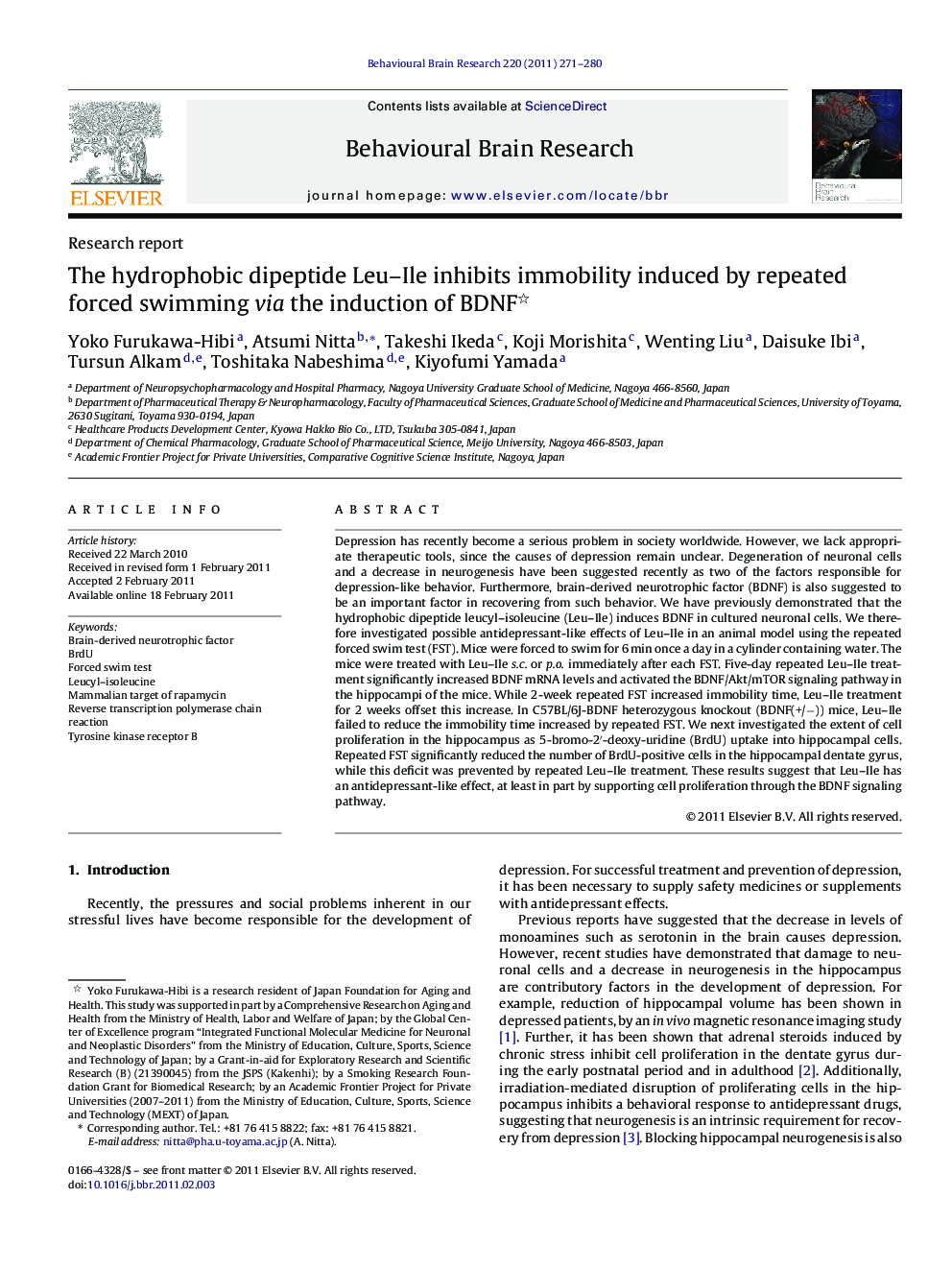| کد مقاله | کد نشریه | سال انتشار | مقاله انگلیسی | نسخه تمام متن |
|---|---|---|---|---|
| 4313748 | 1612998 | 2011 | 10 صفحه PDF | دانلود رایگان |

Depression has recently become a serious problem in society worldwide. However, we lack appropriate therapeutic tools, since the causes of depression remain unclear. Degeneration of neuronal cells and a decrease in neurogenesis have been suggested recently as two of the factors responsible for depression-like behavior. Furthermore, brain-derived neurotrophic factor (BDNF) is also suggested to be an important factor in recovering from such behavior. We have previously demonstrated that the hydrophobic dipeptide leucyl–isoleucine (Leu–Ile) induces BDNF in cultured neuronal cells. We therefore investigated possible antidepressant-like effects of Leu–Ile in an animal model using the repeated forced swim test (FST). Mice were forced to swim for 6 min once a day in a cylinder containing water. The mice were treated with Leu–Ile s.c. or p.o. immediately after each FST. Five-day repeated Leu–Ile treatment significantly increased BDNF mRNA levels and activated the BDNF/Akt/mTOR signaling pathway in the hippocampi of the mice. While 2-week repeated FST increased immobility time, Leu–Ile treatment for 2 weeks offset this increase. In C57BL/6J-BDNF heterozygous knockout (BDNF(+/−)) mice, Leu–Ile failed to reduce the immobility time increased by repeated FST. We next investigated the extent of cell proliferation in the hippocampus as 5-bromo-2′-deoxy-uridine (BrdU) uptake into hippocampal cells. Repeated FST significantly reduced the number of BrdU-positive cells in the hippocampal dentate gyrus, while this deficit was prevented by repeated Leu–Ile treatment. These results suggest that Leu–Ile has an antidepressant-like effect, at least in part by supporting cell proliferation through the BDNF signaling pathway.
Research highlights
► Repeated Leu–Ile treatment significantly increased BDNF mRNA levels in the hippocampi of the mice.
► BDNF is suggested to be an important factor in recovering from depression.
► Repeated Leu–Ile treatment increases the BDNF mRNA in the hippocampus.
► Repeated Leu–Ile treatment offset the increase of immobility time induced by repeated forced swim test (FST).
► Repeated FST significantly reduced the number of BrdU-positive cells in the hippocampal dentate gyrus, while this deficit was prevented by repeated Leu–Ile treatment.
► Leu–Ile has an antidepressant-like effect, at least in part by BDNF signaling pathway.
Journal: Behavioural Brain Research - Volume 220, Issue 2, 7 July 2011, Pages 271–280